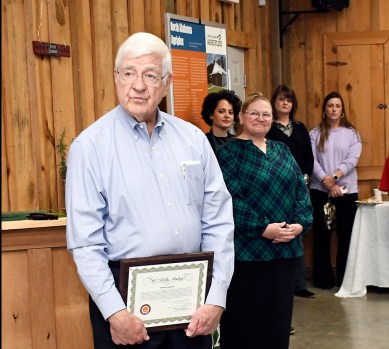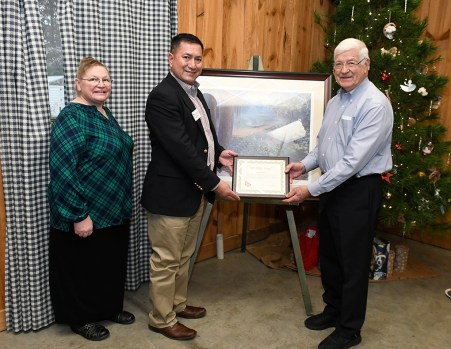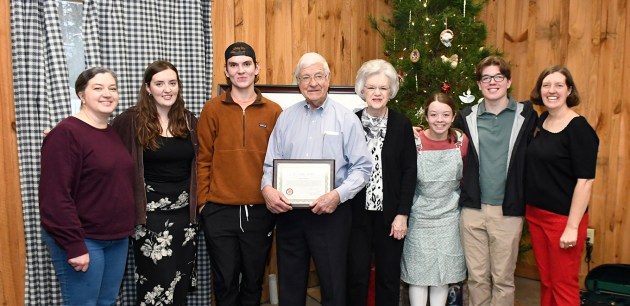Bill Peinhardt recognized for ‘preservation, promotion’ of Eastern Bluebirds
Published 6:32 pm Monday, December 30, 2024
For decades, Dr. Bill Peinhardt has been known in and around Cullman almost as much for his love of Alabama’s outdoor heritage as for his 40-year career as a local physician.
Whether he’s helping to preserve the agricultural past through his family’s Peinhardt Living history Farm or simply gifting one of his hand-made birdhouses to friends, Peinhardt is among the Cullman area’s most consistent advocates for curating humans’ relationship with the natural world. And though seeking recognition has never been his goal, in December, Peinhardt received a little all the same.
At a recent open house event held at the North Alabama Agriplex, Peinhardt was presented the Kelly Mosley Environmental Award for Achievement in Forestry, Wildlife, and Related Resources — a selective statewide honor administered by Auburn University “to publicly recognize achievements that have resulted in the wiser use of Alabama’s renewable natural resources.”
Peinhardt’s “leadership in the preservation and promotion of Eastern Bluebirds in Cullman and surrounding areas has helped educate and encourage countless numbers of youth and adults to take an active role in managing, enjoying, and appreciating the outdoors,” said Auburn Prof. Mark Smith, who made the trip to Cullman to present him with the award.
“His Peinhardt Living History Farm has resulted in tremendous benefits to the community and management of wildlife resources, and in particular, the use of the Peinhardt Living History Farm,” Smith added, leaving Peinhardt with a framed plaque alongside a limited edition framed print.
Peinhardt was nominated for the recognition by Extension Agent Roberta McClellan.
Peinhardt said he had been “blessed to grow up on a family farm in Cullman County” in his acceptance remarks. “I just learned so many things growing up and working [here]. Dad was always interested in conservation. He was very active back in the 1930s when there was some great soil erosion. Farmers were plowing up and down the hills and all … I kind of came by the conservation interest naturally.”
Peinhardt offered a brief history on how Alabama-native bluebird population was first threatened and later nurtured through the area’s past century of agricultural growth. “The bluebird story is a very important, positive story for conservation,” he explained.
“The bluebirds were really appreciated by the early farmers and gardeners, because it’s really fun [to] just sit out and watch your garden sometime; watch bluebirds come down and catch a bug. They’re very friendly to the gardener. They helped control the insects before we used pesticides.
“Then, about the 1950s to the 1960s, somebody brought over English sparrows and brought over starlings, which competed severely with bluebirds. So bluebirds were headed toward extinction, because they didn’t have any place to nest, and the starlings would peck and kill the baby bluebirds. So there was some concern that bluebirds might become extinct.
“Then a movement started to build houses for them all over the country — especially the east. The only specific thing about the bluebird house is to have an inch-and-a-half hole. That prevents larger birds from getting in, and… the bluebirds have made a tremendous response. They have really bounced back, and it’s certainly a very successful story for conservation.”









